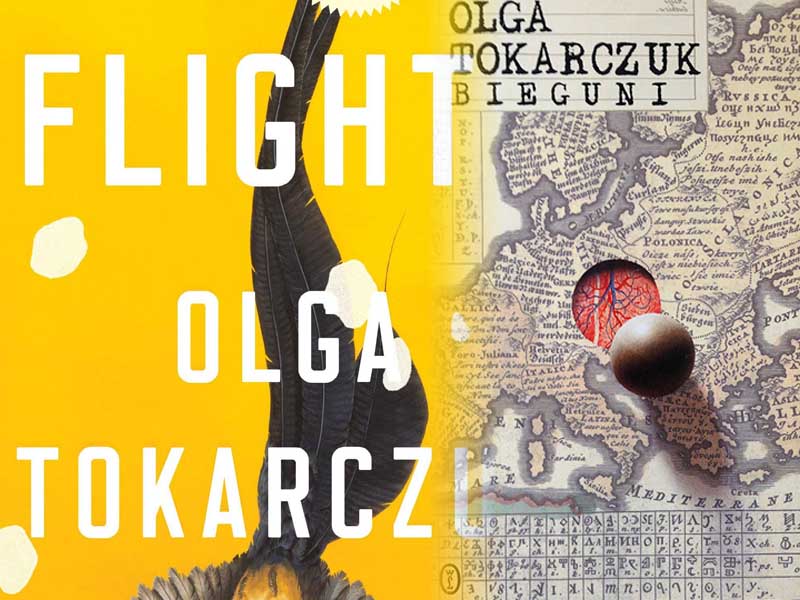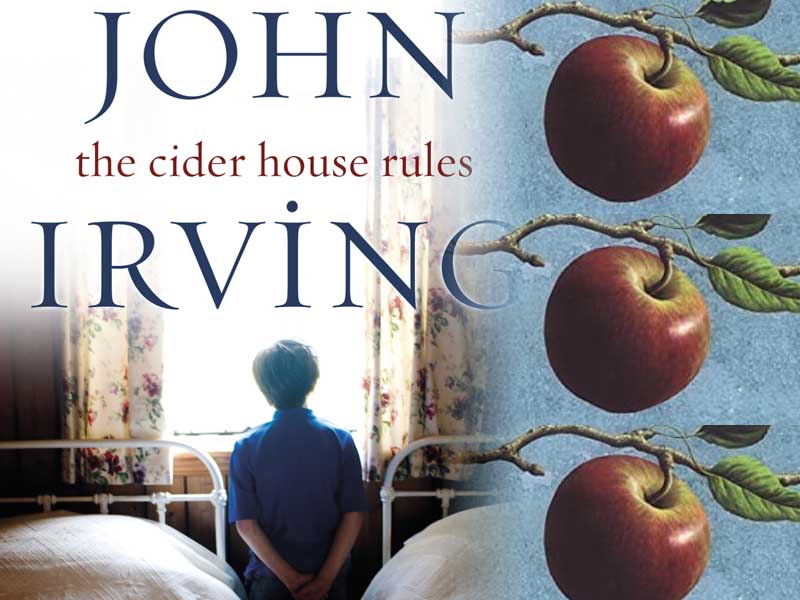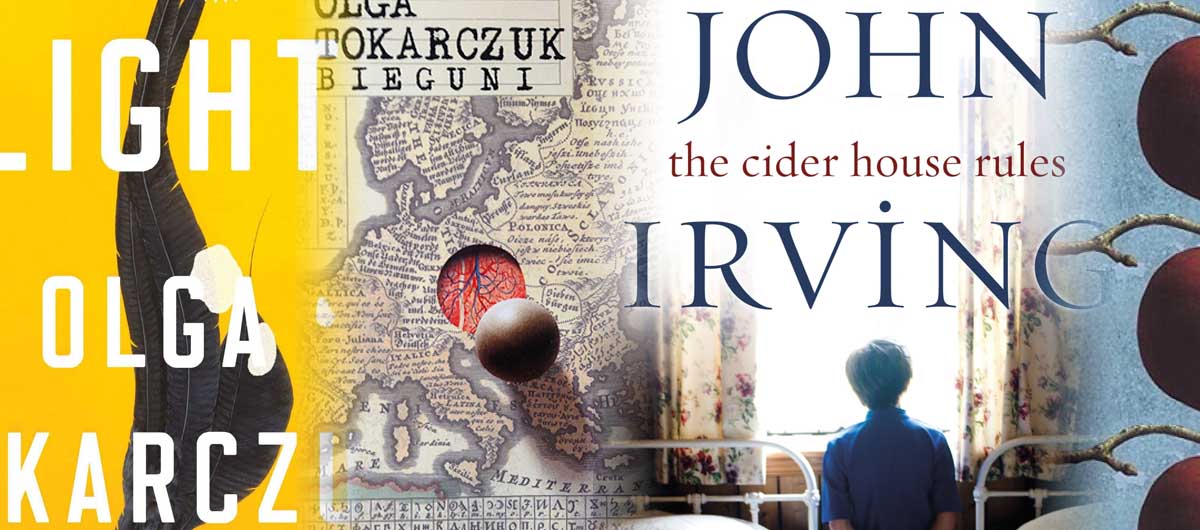In flight: a personal review of The Cider House Rules by John Irving and Flights by Olga Tokarczuk (translated by Jennifer Croft).
Two books in parallel
These are two very different books and the main reason I’m reviewing them together is that I’ve just read both of them in parallel. But, as I’ve noticed before when I’m reading books in parallel, the two can resonate in unexpected ways. For example, The Cider House Rules is a book, in part, about some of the characters’ desire to escape their origins and apparent destiny.
Now, it’s true neither Homer nor Melony gets far from the orphanage at St Cloud’s. As far as I can make out they both live out their lives in the US state of Maine, and both of them end up returning to St Cloud’s. On the other hand, being in flight has nothing necessarily to do with distance.
Runaways in flight
The original Polish title of Olga Tokarczuk’s novel, Bieguni, may also be translated as Runaways. According to Wikipedia it references a sect of Russian Orthodox Old Believers for whom travelling, constant movement, is the only way to escape Satan. Homer Wells in The Cider House Rules has to choose, eventually, whether he is willing to do “the Lord’s work and the Devil’s”. To assist mothers to give birth and to help women who do not want to bear a child with an abortion.
I don’t want to over-strain this, so I won’t go on with the parallels I found, but they’re there.
The Cider House Rules is a discursive novel in the literary tradition of the 19th century. Both Dickens’ David Copperfield and Great Expectations and Charlotte Brontë’s Jane Eyre figure significantly in the book. There are long passages describing major and minor characters, places and incidents. The book reaches back to the late 1800s in describing Doctor Larch and explaining how he came to be the superintendent of the St Cloud’s orphanage, as well as its secret abortionist. It reaches forward – at least by implication – to 1973, when abortion finally became legal in the USA.
Travel and time
Flights, by contrast, is an episodic, fragmentary novel. In some respects you might see it as collection of interlinked short stories. The narrator (who may be a fictionalised version of the author) explains she is writing a book for travellers. She wants to entertain them and occupy them while they wait in airports or hotels, for connecting flights perhaps. The novel is split into 116 short pieces. (Thank you Wikipedia for counting them.) While some are short, others run to many pages. Some are in the form of stories told by one traveller to another, others are letters. Some are historical, others contemporary. All have some element of travel and escape about them.
One underlying theme is the passage of time, and perhaps the varying perception of the passage of time that travellers experience. On the other hand, many of the pieces that make up the book focus on the human body and ways of preserving it. In a sense counteracting the passage of time and the decomposition of the body.

Storytellers
Though, structurally, these books are very different, both are equally engaging. Both Irving and Tokarczuk are wonderful storytellers and, no matter what they write, have an ability to draw the reader in. I speak for myself, but I think anyone who is prepared to surrender to the language of these two authors will find reading either book very rewarding. Or both books, read sequentially. Or in parallel.
It’s 35 years since Irving published The Cider House Rules, 20 odd since the film came out. (Toby McGuire as Homer Wells, Michael Cain as Dr Larch.) As John Irving himself as the St Cloud’s stationmaster.) I might not have picked up the book to read had I not been encouraged by a reader I follow on Instagram, Kate Hyehee (@areadingroomofonesown). Kate was “a bit irked that John Irving left Melony out when he wrote the script for the movie”. Since I’d only ever seen the film and had no recollection of Melony at all, it seemed necessary to fill that gap.
The book stretches over at least 15 years and runs to more than 600 pages, while the film only covers about 15 months. “The finished screenplay,” says John Irving in the afterword, “was a mere 136 manuscript pages.” Of Melony, Irving says: “I eliminated her from the screenplay; she was simply too overpowering character.” Kate and I think Melony deserves a film telling the story from her perspective.

Flights
As for Flights, I can’t imagine how anyone would manage to film it.* Though perhaps, in this day and age, it might form the basis of a “streamed to television” series. Still, I don’t think a TV series would be nearly as effective as the book. I picked up Flights a because I enjoyed Drive Your Plow Over the Bones of the Dead. I want to read more Tokarczuk, but I’m eyeing The Books of Jacob with a certain amount of trepidation. It’s a very thick book!
Anyway, that’s what I’ve been reading recently. What about you?
* Note
I write things and then discover how wrong I can be. It’s a salutary experience, I suppose.
Looking for images to illustrate this week’s post I discovered that a play based on the original Polish version of Flights premiered in January. The Powszechny Theater in Warsaw performed Bieguni in an adaptation directed by Michał Zadara, and shared the performance it on their own Video on Demand streaming service. See here (in Polish).




